The curious case of reduced testing in Pakistan
- Pakistan has been recognised as one of the countries with a declining rate of COVID-19 spread
- A huge wave is behind us, whether that was the only one time will tell
The NYT global study tracking the coronavirus outbreak has recognized Pakistan as one of the countries with decreasing COVID-19 cases.
By assessing the two week trajectory of reported cases in Pakistan, which on average was 3,736 two weeks ago, the report shows a significant decline in the daily new cases being reported in Pakistan to 1,918 on 18 July. A remarkable recovery made by the country, however, is being overshadowed by allegations and concerns that the government is deliberately reducing the current rate of testing (despite having a higher capacity) to allegedly keep statistics at bay. To investigate this conspiracy, Brecorder interviewed the Director of Chugtai Labs, Mr. Omar Chugtai earlier today.
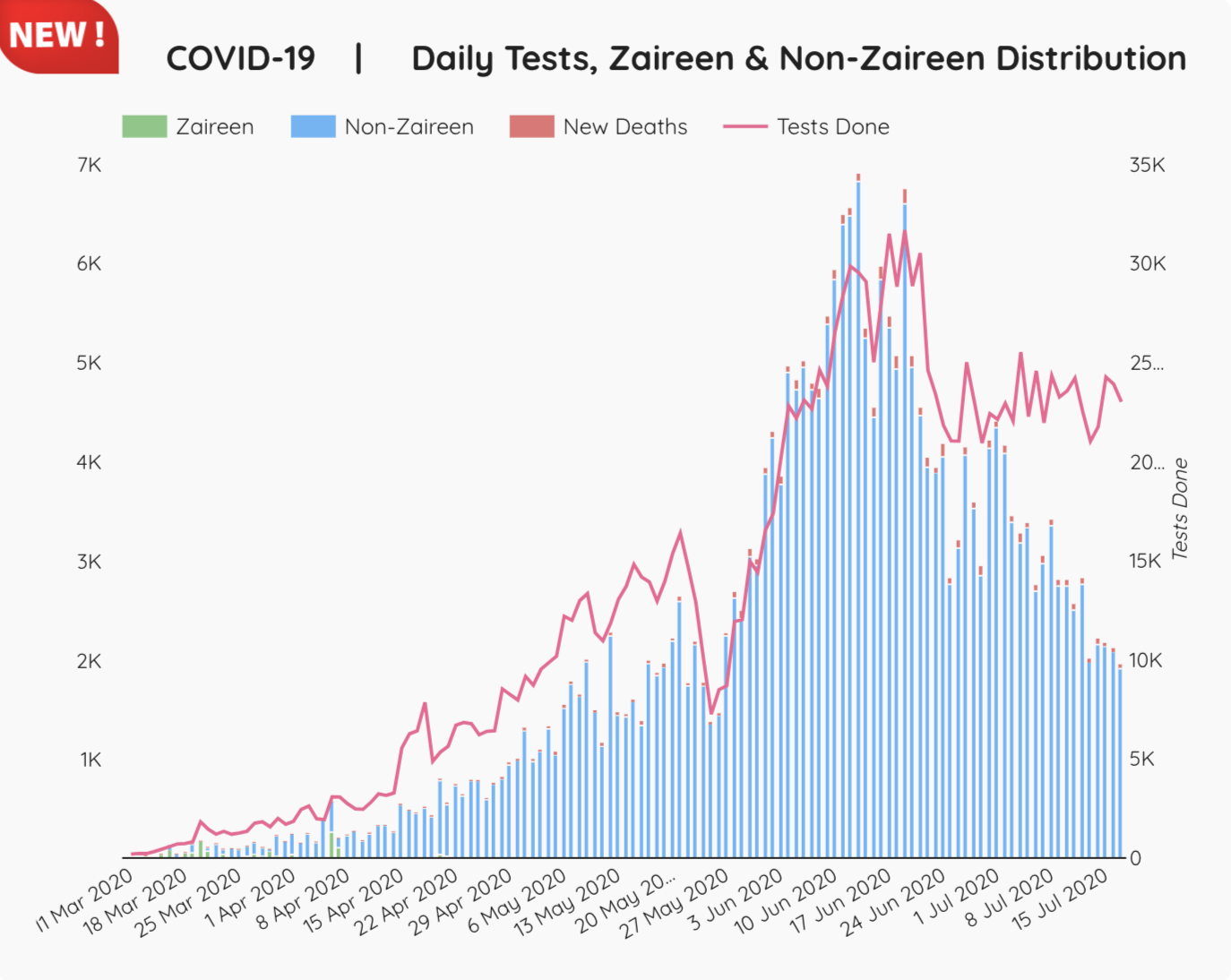
“Our curve looks similar to what it was in April, except now it is going down. The positivity rate for the virus has declined exponentially since June, primarily due to smart-lockdowns, contact tracing and imposing mandatory SOPs like wearing mask, using hand sanitizers and washing hands properly”, Mr. Chugtai debunked the raised assertion, “The government has advised us to bolster our testing capacity instead and has been critically engaged with our data. We increased our testing capacity from 6000 to 8000 in July. You cannot hide the virus. Even if one attempts to modify it through public relations and media management, it is important to note that the virus does not care what political party or country we belong to.”
Has There Been A Decline In Reported Cases?
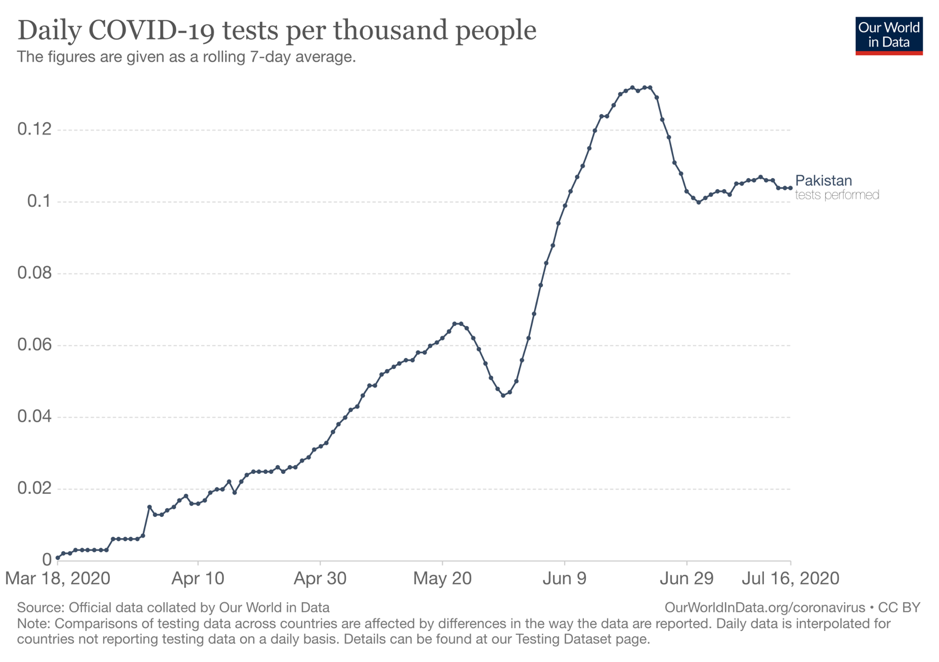

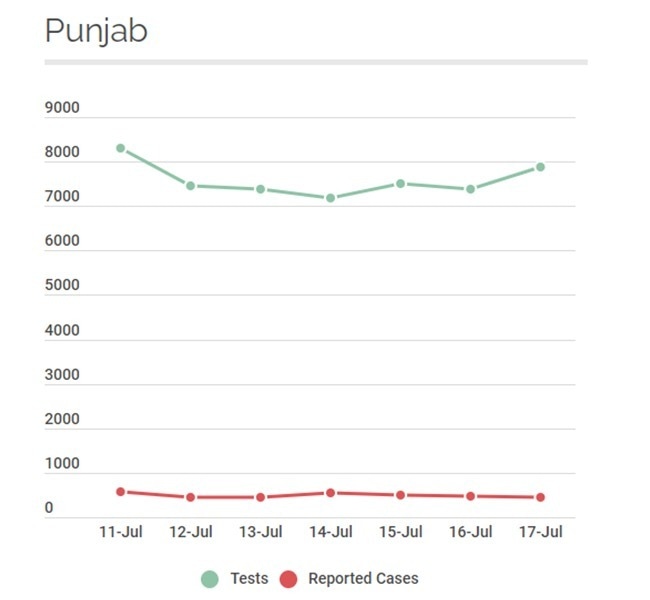
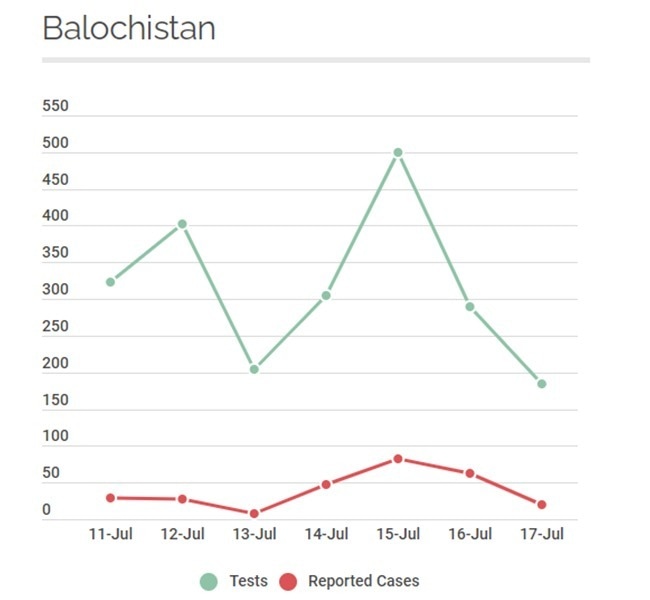
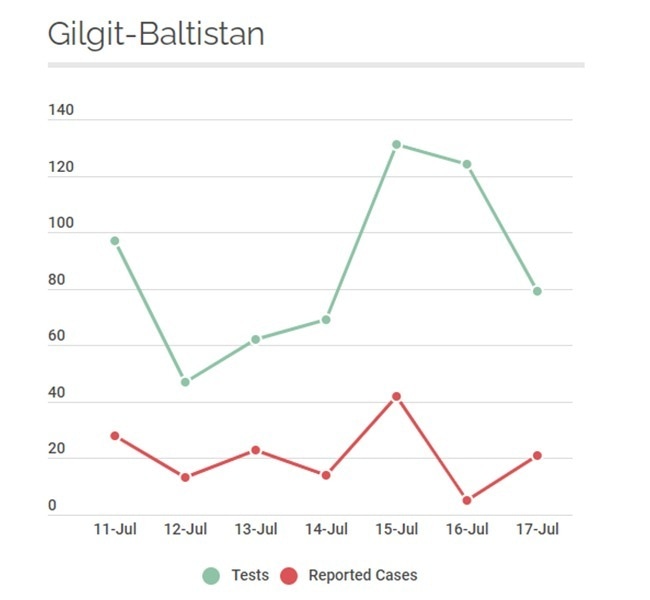
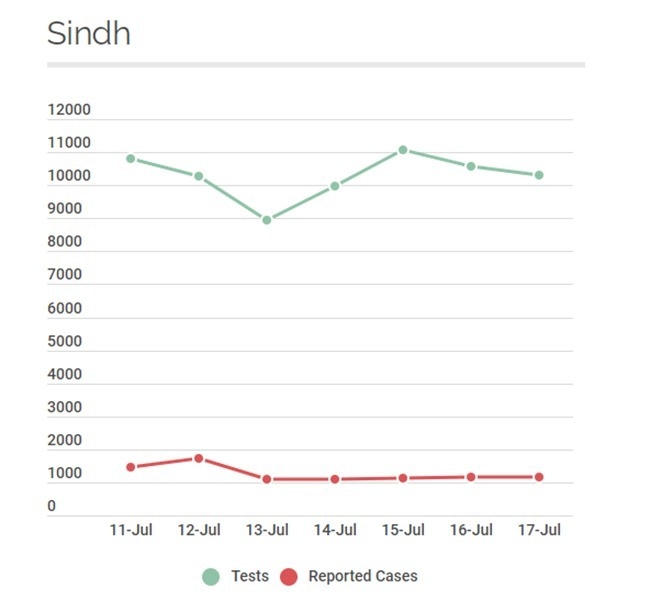

In most areas in Pakistan, the data analysing a week a long positivity rate suggests that there is a decline in the number of reported cases in most areas, if not all.
A recent study by the Imperial College London suggests that Pakistan is reporting 76 % of its actual cases, leading many to believe that Pakistan may have controlled the coronavirus for now. With the effective reproductive rate of the virus being less than 1 (0.89), the risk of an infected person infecting at least one other person has reduced dramatically.

Mr. Omar opined on the decline of the surge following Eid ul Fitr, “The data we have collected so far suggests that the biggest, if not the only surge is behind us. There is consensus on national policy between the federal and the provincial governments to tackle the novel virus and that has brought us to the point we are at.”
Why Have The Tests Decreased?
People are not getting tested. This could be because they are no longer getting sick or because they are reluctant to get tested. The latter case might be either because they are scared of being subjected to strict action by the authorities or because they feel they have learnt from the experiences of sick relatives and can contain the symptoms at home. There still exists a lot of stigma around the virus and people are afraid of gossip. While Mr. Chugtai highlights that in June almost every household knew of an infected patient as opposed to the situation now that is largely under control.
Chugtai lab is currently testing two sets of patients: symptomatic patients and aspiring travellers who now require a negative PCR to travel freely. Since April, it no longer conducts two PCR tests on recovering patients following their disease. Since April, WHO and NIH only requires one negative PCR to declare a patient recovered because recent studies show the disease does not last beyond 3 to 4 weeks even if some symptoms stay for longer. 5 % to 10 % people report positive for PCR even after fully recovering as traces remain in their respiratory system.
Additionally, some believe Pakistan is beginning to develop herd immunity. Mr. Chugtai espouses contact tracing strategy coupled with antibodies testing to gauge how many people have developed immunity. According to Mr. Chugtai, 8 out of 10 people develop antibodies that approximately last two to three months. While the government has been using PCR to identify hotspots of the virus, he believes it is time we identify which of the recovered faction of the population has developed immunity. “Our data using the antibody tests suggest that more than 50% of the infected (now recovered) people have developed antibodies. In Lahore, roughly 40% people we tested have antibodies”.
In addition, Pakistan has a 64% youth bulge which means the majority of the people being infected might exhibit mild to no symptoms and recover quickly. This is in contrast to countries like Italy and Spain where the proportion of elderly is significant. It is also noteworthy that people with stronger immunity are not developing flu-like symptoms. Despite inadequate data, there have been some unofficial accounts of a marked increase in cardiac arrests and strokes among young and old people in close-knit communities, often leading to sudden deaths since the advent of the coronavirus. These cases often go untested and unreported.
Many remain critical of the quality of data being collected in Pakistan. An alternative way to look at the decrease is to note the rate of available beds and ventilators in the hospitals for critical patients. Following 4 July, there has been a decline in ventilator use and bed occupancy in many hospitals in Punjab. Moreover, KP has seen a gradual decrease in use of ventilators and oxygenated beds that indicates that people are no longer critically ill.
Are We Headed In The Right Direction?
As Pakistan controls the spread of the coronavirus, the economy might also pick up pace. The IMF economic outlook 2020 forecasts Pakistan’s GDP growth rate to be -0.4, which compared to most other countries seems very optimistic. Recently, Pakistan received record high remittances along with bolstering of Ehsaas program from Rs144 bn to Rs203 bn. Vaccination drives are likely to resume soon in danger of WHO’s prediction that many more people are at risk from lack of vaccinations than from coronavirus in Pakistan.
Despite such feats, many worry about the surge that will follow Eid ul Azha. Mr. Chugtai emphases self-discipline and self-care, “Testing is a diagnostic tool for the community. While it can help trace and intervene on a communal level, it cannot interfere on an individual level. It is difficult to bring access to healthcare to everybody, however the government has done a proactive job to encourage people to do it and spread awareness. In order to prevent another surge, people must stay home this following Eid”. The government is preparing for this by monitoring SOPs in markets currently and adding oxygenated beds to various hospitals.
While Pakistan seems to have recovered from the massive surge following last Eid, tragically, 5,522 lives have been lost and the total national tally of reported cases stands at 261,917 out of which 198,509 have recovered. For now though, Pakistan has controlled the spread of the novel virus and we await the arrival of the COVID-19 vaccine, hoping at least one contender proves effective.
























Comments
Comments are closed.